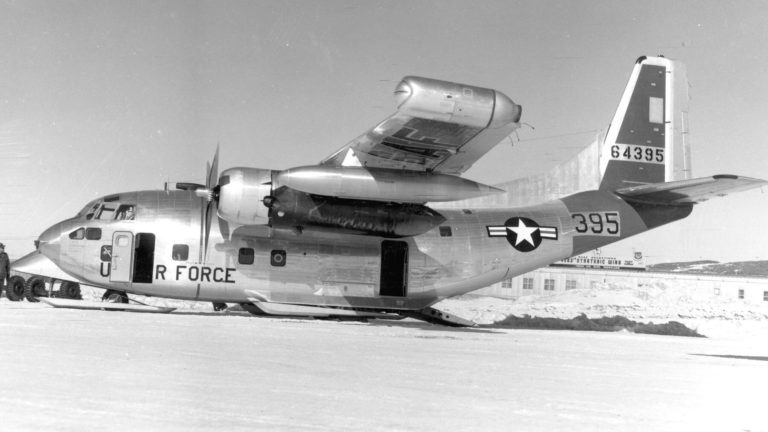Did C-123 Aircraft Spray Agent Orange During the Vietnam War?

CCK Law: Our Vital Role in Veterans Law
During the Vietnam War, the United States military used an herbicide called Agent Orange as a defoliant in Vietnam and on the perimeters of certain Royal Thai Air Force Bases in Thailand. Agent Orange was sprayed by C-123 aircraft as a part of Operation Ranch Hand as a means of killing vegetation in Vietnam during the war.
What Are C-123 Aircraft?
C-123 aircraft were used to spray Agent Orange over forested areas in Vietnam during Operation Ranch Hand. The aircraft were fitted with spray tanks to spray the herbicide across large areas of the country.
IOM Report
After hearing complaints of health concerns from Air Force reservists who crewed C-123 aircraft, the VA asked the National Academy of Sciences, Engineering, and Medicine to study possible exposures and adverse health effects in those who worked and crewed C-123 aircraft.
The report, Post-Vietnam Dioxin Exposure in Agent Orange-Contaminated C-123 Aircraft, was released in January 2015. Following the report, the VA has conceded that Airmen who worked on C-123 aircraft as a part of Operation Ranch Hand were exposed to Agent Orange, and qualify for presumptive service connection for certain diseases associated with Agent Orange exposure.
The report found that the C-123 aircraft used during Operation Ranch Hand had residue of Agent Orange, and those who worked on these aircraft after their return were exposed to the herbicide. After Operation Ranch Hand, C-123 aircraft were returned to the United States to be used by the Air Force and Air Force reserves, exposing service members to the Agent Orange that remained on the aircraft. The report found that exposure to Agent Orange could result in adverse health issues.
As a result of the report, the VA has added those who worked on or served aboard these aircraft to the VA’s herbicide presumption regulation.
The Presumptive Rule
Based on the findings of the report, the VA added those exposed to Agent Orange through contact with C-123 aircraft to their herbicide presumptive regulation. The regulation now includes “individuals who performed service in the Air Force or Air Force Reserves who regularly operated, maintained, or served aboard C-123 aircraft known to have been used to spray herbicides during the Vietnam era.”
The VA website notes that the following individuals may qualify for Agent Orange exposure-related benefits:
- Active duty personnel who served in a regular United States Air Force unit location where a contaminated C-123 was assigned who had regular contact with the aircraft through flight, ground, or medical duties between 1969 and 1986, and who developed Agent Orange related disabilities.
- Reservists who were assigned to flight, ground, or medical duties at the below locations between 1969 and 1986, and who developed Agent Orange related disabilities:
- Lockbourne/Rickenbacker Air Force Base in Ohio (906th and 907th Tactical Air Groups or 355th and 356th Tactical Airlift Squadron)
- Westover Air Force Base in Massachusetts (731st Tactical Air Squadron and 74th Aeromedical Evacuation Squadron)
- Pittsburgh, Pennsylvania, International Airport (758th Airlift Squadron)
How to Qualify for Benefits Due to Agent Orange Exposure
The VA’s herbicide regulation covers Air Force and Air Force reserve members who served between 1969 and 1986, and who “regularly and repeatedly operated, maintained, or served aboard C-123 aircraft.” Veterans must prove to the VA that they fall under these criteria in order to be eligible for presumptive service connection for conditions outlined in the VA’s regulation.
The diseases associated with Agent Orange exposure include:
- AL amyloidosis
- Chloracne, and other acneform diseases consistent with chloracne
- Diabetes mellitus type II
- Hodgkin’s disease
- Ischemic heart disease
- All chronic B-cell leukemias
- Multiple myeloma
- Non-Hodgkin’s lymphoma
- Parkinson’s disease
- Early-onset peripheral neuropathy
- Porphyria cutanea tarda
- Prostate cancer
- Respiratory cancers, such as cancer of the lungs, trachea, bronchus, or larynx
- Soft-tissue sarcoma
If you were a member of the Air Force or Air Force reserves and worked on or served aboard C-123 aircraft between 1969 and 1986, you may have been exposed to Agent Orange. If you have a condition that you believe to be caused by your exposure, our office may be able to help. Call our office at 800-544-9144 for a free case evaluation.
About the Author
Share this Post
